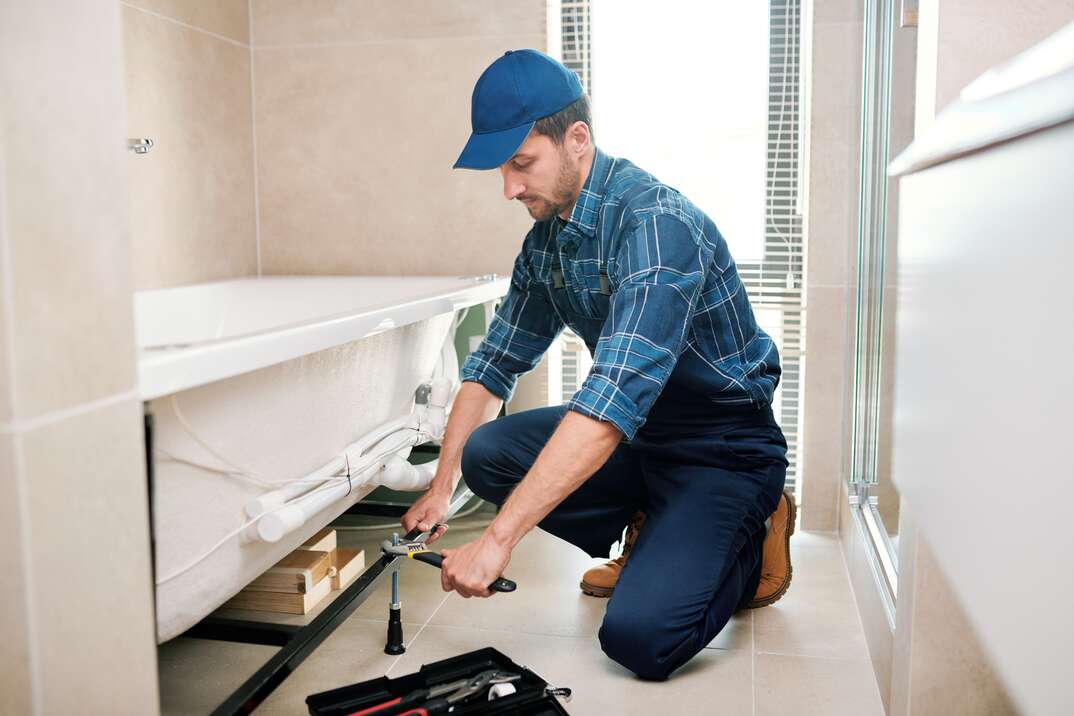The article author is making a number of great annotation about How to Install a Bathtub: Install an Acrylic Tub and Tub Surround overall in this content on the next paragraphs.

Setting up a tub isn't specifically brain surgery, but it does require solid plumbing, carpentry, and in some cases, tiling abilities. Changing an old bath tub with a brand-new one is additionally a reasonably tough job. If the old bathtub is conveniently easily accessible, the job can relocate immediately; if you need to open a wall surface to eliminate the old bathtub as well as place the brand-new tub, the job is a lot harder. In either situation, the job is within a home handyman's skills, although you will need a helper to move out the old tub and set in the brand-new one. Make sure you have qualified yourself for the task as well as fit trying it. As opposed to working with a service provider to take control of a halfway-completed job, it is much better to consider utilizing one before you begin. Possibilities are you might require an expert plumber to make tube connections.
This short article will assist you install a brand-new bathtub in your bathroom if you have already bought a brand-new bathtub and also do not require to transform the setup of your previous water pipes.
Your devices and also product list need to consist of the following:
Getting ready for the Installation
Firstly, the supporting structure provided with the bathroom must be fitted (if required) according to the maker's directions. Next, fit the taps or mixer to the bath tub. When suitable the tap block, it is essential to make sure that if the faucet features a plastic washing machine, it is fitted between the bath and also the faucets. On a plastic bath, it is additionally practical to fit a supporting plate under the taps device to avoid stress on the bathtub.
Fit the adaptable faucet ports to the bottom of the two faucets using 2 nuts and olives (occasionally provided with the tub). Fit the plug-hole electrical outlet by smearing mastic filler round the sink electrical outlet hole, and then pass the electrical outlet with the hole in the bath. Utilize the nut supplied by the supplier to fit the plug-hole. Take a look at the plug-hole outlet for an inlet on the side for the overflow pipeline.
Next, fit completion of the versatile overflow pipe to the overflow electrical outlet. After that, screw the pipeline to the overflow face which ought to be fitted inside the bath. Make certain you utilize every one of the provided washers.
Attach the trap to the bottom of the waste electrical outlet on the tub by winding the thread of the waste electrical outlet with silicone mastic or PTFE tape, and screw on the catch to the outlet. Link the bottom of the overflow tube in a comparable manner.The bath must now prepare to be fitted in its last setting.
Removing Old Touches
If you need to change old taps with brand-new ones as a part of your installation, after that the first thing you ought to do is separate the supply of water. After doing so, activate the taps to drain pipes any type of water continuing to be in the system. The process of getting rid of the existing taps can be fairly problematic as a result of the restricted accessibility that is typically the instance.
Utilize a container wrench (crowsfoot spanner) or a tap device to reverse the nut that links the supply pipelines to the faucets. Have a fabric all set for the remaining water that will certainly originate from the pipes. As soon as the supply pipes have been gotten rid of, use the exact same device to loosen up the nut that holds the taps onto the bath/basin. You will certainly require to stop the solitary faucets from turning throughout this procedure. Once the faucets have actually been removed, the holes in the bath/basin will certainly have to be cleansed of any old sealing substance.
Before proceeding to fit the brand-new faucets, compare the pipe links on the old faucets to the brand-new taps. If the old taps are longer than the brand-new faucets, then a shank adapter is required for the brand-new taps to fit.
Setting up the Bath tub
Using the two wood boards under its feet, position the bathtub in the called for position. The wooden boards are practical in equally spreading out the weight of the bathtub over the area of the boards rather than concentrating all the weight onto four little factors.
The following goal is to guarantee that the tub is leveled all round. This can be attained by examining the spirit level and changing the feet on the tub till the level reviews level.
To install taps, fit the bottom of the furthest flexible tap connector to the suitable supply pipeline by making a compression sign up with; after that do the very same for the various other faucet.
Turn on the water and also examine all joints and new pipework for leaks and tighten them if required. Fill the bath tub as well as additionally check the overflow outlet as well as the typical electrical outlet for leakages.
Lastly, take care of the bathroom paneling as defined in the maker's user's manual. Tiling and also securing around the tub should wait until the bathtub has been used at the very least when as this will certainly resolve it right into its last setting.
Fitting New Touches
If the tails of the brand-new faucets are plastic, after that you will certainly need a plastic port to prevent damage to the thread. One end of the adapter fits on the plastic tail of the faucet and also the other end provides a link to the current supply pipelines.
If you require to fit a monobloc, then you will require lowering couplers, which attaches the 10mm pipeline of the monobloc to the common 15mm supply pipeline.
Next off, place the faucet in the placing opening in the bath/basin guaranteeing that the washers remain in area between the tap and also the sink. Safeguard the faucet in place with the manufacturer offered backnut. Once the tap is firmly in place, the supply pipes can be attached to the tails of the faucets. The taps can either be attached by using corrugated copper piping or with normal faucet ports. The former kind ought to be connected to the faucet ends first, tightening up only by hand. The supply pipes can later on be linked to the various other end. Tighten both ends with a spanner after both ends have been attached.
Tiling Around the Tub
In the location where the bath fulfills the ceramic tile, it is required to secure the accompanies a silicone rubber caulking. This is essential as the installation can move sufficient to split a rigid seal, creating the water to permeate the wall in between the bath and also the tiling, resulting in complications with wetness and feasible leaks to the ceiling listed below.
You can choose from a selection of coloured sealants to assimilate your fixtures and also fittings. They are marketed in tubes as well as cartridges, and also are capable of securing gaps as much as a width of 3mm (1/8 inch). If you have a bigger gap to fill up, you can fill it with spins of soaked paper or soft rope. Remember to always load the tub with water prior to sealing, to permit the movement experienced when the tub remains in use. The sealer can crack relatively very early if you do not consider this activity prior to sealing.
Additionally, ceramic coving or quadrant floor tiles can be utilized to border the bath or shower tray. Plastic strips of coving, which are easy to use as well as reduce to size, are likewise easily offered on the marketplace. It is recommended to fit the ceramic tiles using water-resistant or waterproof sticky and also grout.
How to Install a Freestanding Bathtub?
Installing a freestanding bathtub or any kind of bathtub is not a difficult task if you have a sophisticated guide on installing a freestanding bathtub in your bathroom. Aside from getting the freestanding bathtub to your bathroom, you can do all the work without paying a plumber. A bathroom with a bathtub is a retreat where you can feel the sensation of coming home and soaking in that hot water. It is a great way to remove all the stress from your day.
This guide will walk you through installing a freestanding bathtub in simple steps and help you find relief.
Slope
Make sure your bathroom has a proper slope. If your floor lacks a slope, the water flow to the drain will not function, which leads to a blocked drain which can cost you money. You can use the level device to see your bathroom's vertical and horizontal aspects. Once you have that information, you must carry out the next step.
Placement
A freestanding bathtub has a unique characteristic that helps you bring elegance to your bathroom. A freestanding bathtub comes in various sizes and shapes suitable for different types of bathrooms.
According to the information you gathered from the level device, you must pick a bathtub that suits your style and fits your bathroom aesthetically. You can place a freestanding bathtub virtually anywhere, such as in the corner, near the wall, or even at the center of your bathroom. However, you must ensure proper plumbing where you want to install the tub. If not, then you must call a plumber.
Clean the bathroom floor
After deciding where to place the bathtub, you must clean the entire bathroom floor so that the dust and debris do not accumulate underneath the tub. Simple cleaning is enough, and you will clean it again after the installation.
Steps to Install a Freestanding Bathtub:
STEP 1: Place the protective blanket in the adjacent area where you want to install the bathtub. It will help you protect the bathtub's sides when you do the installation.
STEP 2: Now, place the 4x4 lumber in the area where you want to install the bathtub. Place the bathtub on top of the lumber, and align the drain line with the bathtub drain.
STEP 3: A freestanding bathtub comes with a drain kit. If not, make sure you purchase one with your bathtub. You can pop that drain kit and align it with your bathroom drain line. Ensure that you tighten the drain nut enough so there is no water leakage. You must also clean the bathtub’s drain to remove the factory dirt and debris.
STEP 4: Clean the drain hole in your bathroom. It helps to do the installation without any water blockage. A drain cleaner or bleach will suffice. Once the drain dries entirely, take a small amount of clear silicon and place it around the underside of the pipe flange.
STEP 5: Attach the drain tailpiece to the bottom of the bathtub. Place the rubber or plastic bushing with the plumbing material at the top of the tailpiece and screw the drain nut up the tube until it tightens both the bathtub’s drain and the drain tailpiece. Now you must add the lubricant to the seal to ensure there is no water leakage in the pipe connection.
STEP 6: Place caulk around the bottom edge of the bathtub. Take out the lumbar support and carefully bring the bathtub to the floor. Use a damp cloth to clean the excess caulk and debris and plumber putty to cover the tub drains and the floor.
Tips to Maintain a Freestanding Bathtub:
Always look for the clog in the drain. You can pull it out with a small stick if hair or debris is in the gutter. Use mild cleaning components, which will help you preserve the bathtub for a long time and will also help you remove surface-level scratches. Do not use strong solutions such as concentrated bleach to remove stains. Instead, mix water and diluted bleach with a ratio of 10:2, respectively. Apply it to the tub's surface and leave it for 15-20 minutes to remove any surface-level stains. Always check the floor drain. You may unclog it using any small sticks or a small vacuum to suck out all the debris. Check the heater or faucet immediately if you smell rust or grease in the water. Rust in the water may stain or damage the bathtub in the long run. If you want to sand the bathtub, try using 400 grit sandpaper or 600 grit sandpaper for a more refined finish.

I came across that article about Tools You Need to Install a New Bathtub while doing a search on the internet. Do you know about another individual who is interested by the subject? Feel free to promote it. Thanks so much for going through it.
Book Appointment
 Marla Sokoloff Then & Now!
Marla Sokoloff Then & Now! Erik von Detten Then & Now!
Erik von Detten Then & Now! Macaulay Culkin Then & Now!
Macaulay Culkin Then & Now! Karyn Parsons Then & Now!
Karyn Parsons Then & Now! McKayla Maroney Then & Now!
McKayla Maroney Then & Now!